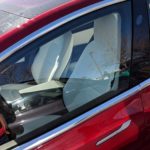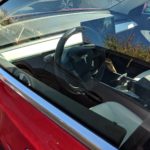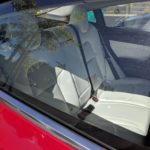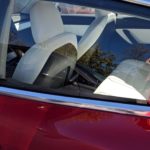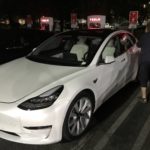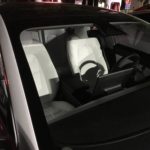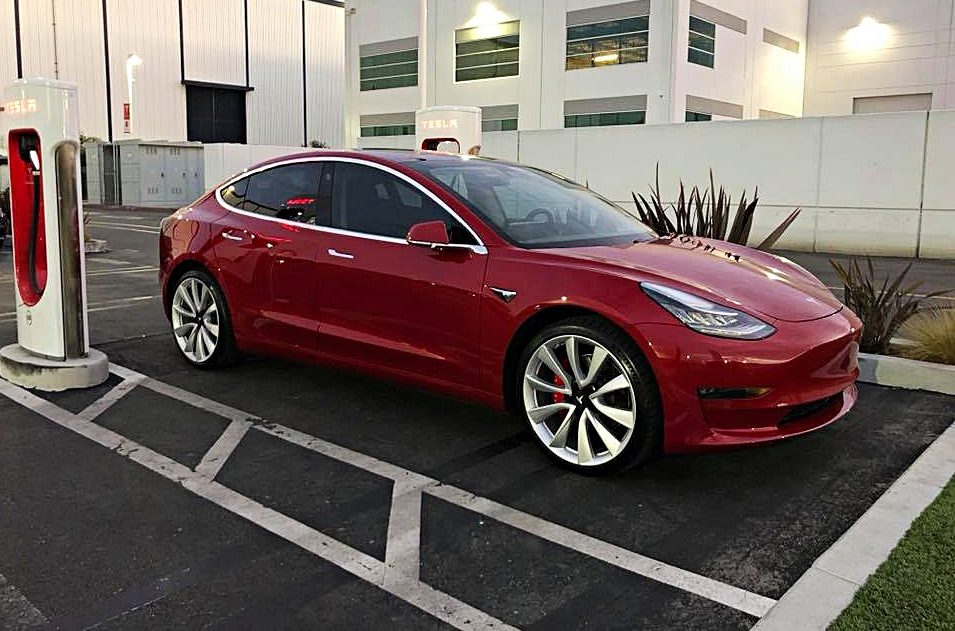
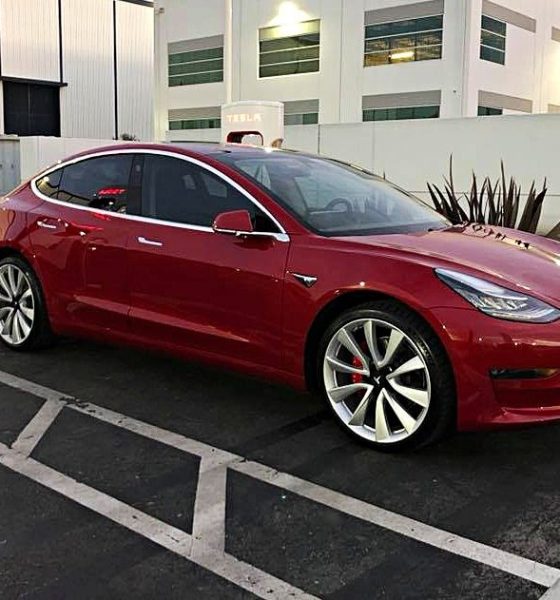
News
Tesla Model 3 with white seats and dual motor AWD could come in July, says Elon Musk
In a series of tweets this weekend, Elon Musk stated that the production for the dual motor AWD version of the Tesla Model 3 could start production as early as July. White seats for the mass market compact electric sedan could be introduced in the same month as well.
Musk’s update on Twitter came as a response to Brandon Ledford, a Model 3 reservation holder, who asked for a timeline on when the dual motor configuration would arrive. Not long after Ledford’s inquiry, Musk responded, explaining that options such as dual motors would be offered when the production ramp-up of the existing Long Range Model 3 in rear-wheel drive hits 5,000/week.
“We need to achieve 5k/week with Model 3 before adding complexity that would inhibit production ramp,” Musk tweeted.
- Tesla Model 3 with white seats spotted at the Mountain View Supercharger via Imgur
Musk added an afterthought to his explanation, stating that the dual motor configuration would probably be available in July. As soon as Musk gave a timeline for the AWD option for the Model 3, another Tesla enthusiast inquired about the availability of white seats for the car. The Tesla CEO responded to this inquiry as well, stating that the white seat option for the Model 3 would be introduced in “similar timing” as the dual motor.
Considering Musk’s recent updates on Twitter, July might prove to be a pivotal month for Model 3 reservation holders. With production expected to reach a steady 5,000/week rate by then, Tesla would finally be able to roll out new configurations for the vehicle. Other options, such as the $35,000 standard-range variant, as well as the much-anticipated Performance version with Ludicrous Mode, would likely follow after.
So probably July
— Elon Musk (@elonmusk) April 8, 2018
Sightings in the wild appear to be building up towards the release of the Model 3’s dual-motor AWD and white interior configurations. Back in February, we reported on a Model 3 with a dual-motor VIN being spotted in San Francisco, CA. The sighting of the vehicle was shared on Twitter by Ryan McCaffrey of the Ride the Lightning podcast.
A Model 3 with white interior was also spotted in February near Tesla’s OSH showroom in Palo Alto, CA. From what could be seen in pictures taken of the vehicle, the color scheme of the electric car’s interior appears to have been changed from the car’s prototype, with some elements such as the center console being black instead of white. The headliner for the Model 3 near the OSH showroom was also white, in contrast to the prototype of the vehicle, which had a distinct black headliner.
Showing his trademark charm on Twitter, Elon Musk also pledged to take corrective action for Model 3 line-waiters who are still waiting for their configuration invites.
Musk’s pledge came after Justin Streufert, a Model 3 reservation holder, noted that some who reserved the car online were getting priority over those who stood in line for the vehicle. Another Model 3 reservation holder added that some who placed online reservations in April-June were already getting invites to configure. Some Day 1 line-waiters, however, were still waiting for invitations.
Musk first responded that he would be “looking into it now,” before following up with another tweet. Musk pledged to take measures to address the problem and issued an apology to his Twitter followers.
Definitely. Will take corrective action immediately. Sorry about this.
— Elon Musk (@elonmusk) April 8, 2018

Elon Musk
Elon Musk and Tesla AI Director share insights after empty driver seat Robotaxi rides
The executives’ unoccupied tests hint at the rapid progress of Tesla’s unsupervised Robotaxi efforts.

Tesla CEO Elon Musk and AI Director Ashok Elluswamy celebrated Christmas Eve by sharing personal experiences with Robotaxi vehicles that had no safety monitor or occupant in the driver’s seat. Musk described the system’s “perfect driving” around Austin, while Elluswamy posted video from the back seat, calling it “an amazing experience.”
The executives’ unoccupied tests hint at the rapid progress of Tesla’s unsupervised Robotaxi efforts.
Elon and Ashok’s firsthand Robotaxi insights
Prior to Musk and the Tesla AI Director’s posts, sightings of unmanned Teslas navigating public roads were widely shared on social media. One such vehicle was spotted in Austin, Texas, which Elon Musk acknowleged by stating that “Testing is underway with no occupants in the car.”
Based on his Christmas Eve post, Musk seemed to have tested an unmanned Tesla himself. “A Tesla with no safety monitor in the car and me sitting in the passenger seat took me all around Austin on Sunday with perfect driving,” Musk wrote in his post.
Elluswamy responded with a 2-minute video showing himself in the rear of an unmanned Tesla. The video featured the vehicle’s empty front seats, as well as its smooth handling through real-world traffic. He captioned his video with the words, “It’s an amazing experience!”
Towards Unsupervised operations
During an xAI Hackathon earlier this month, Elon Musk mentioned that Tesla owed be removing Safety Monitors from its Robotaxis in Austin in just three weeks. “Unsupervised is pretty much solved at this point. So there will be Tesla Robotaxis operating in Austin with no one in them. Not even anyone in the passenger seat in about three weeks,” he said. Musk echoed similar estimates at the 2025 Annual Shareholder Meeting and the Q3 2025 earnings call.
Considering the insights that were posted Musk and Elluswamy, it does appear that Tesla is working hard towards operating its Robotaxis with no safety monitors. This is quite impressive considering that the service was launched just earlier this year.
Elon Musk
Starlink passes 9 million active customers just weeks after hitting 8 million
The milestone highlights the accelerating growth of Starlink, which has now been adding over 20,000 new users per day.

SpaceX’s Starlink satellite internet service has continued its rapid global expansion, surpassing 9 million active customers just weeks after crossing the 8 million mark.
The milestone highlights the accelerating growth of Starlink, which has now been adding over 20,000 new users per day.
9 million customers
In a post on X, SpaceX stated that Starlink now serves over 9 million active users across 155 countries, territories, and markets. The company reached 8 million customers in early November, meaning it added roughly 1 million subscribers in under seven weeks, or about 21,275 new users on average per day.
“Starlink is connecting more than 9M active customers with high-speed internet across 155 countries, territories, and many other markets,” Starlink wrote in a post on its official X account. SpaceX President Gwynne Shotwell also celebrated the milestone on X. “A huge thank you to all of our customers and congrats to the Starlink team for such an incredible product,” she wrote.
That growth rate reflects both rising demand for broadband in underserved regions and Starlink’s expanding satellite constellation, which now includes more than 9,000 low-Earth-orbit satellites designed to deliver high-speed, low-latency internet worldwide.
Starlink’s momentum
Starlink’s momentum has been building up. SpaceX reported 4.6 million Starlink customers in December 2024, followed by 7 million by August 2025, and 8 million customers in November. Independent data also suggests Starlink usage is rising sharply, with Cloudflare reporting that global web traffic from Starlink users more than doubled in 2025, as noted in an Insider report.
Starlink’s momentum is increasingly tied to SpaceX’s broader financial outlook. Elon Musk has said the satellite network is “by far” the company’s largest revenue driver, and reports suggest SpaceX may be positioning itself for an initial public offering as soon as next year, with valuations estimated as high as $1.5 trillion. Musk has also suggested in the past that Starlink could have its own IPO in the future.
News
NVIDIA Director of Robotics: Tesla FSD v14 is the first AI to pass the “Physical Turing Test”
After testing FSD v14, Fan stated that his experience with FSD felt magical at first, but it soon started to feel like a routine.

NVIDIA Director of Robotics Jim Fan has praised Tesla’s Full Self-Driving (Supervised) v14 as the first AI to pass what he described as a “Physical Turing Test.”
After testing FSD v14, Fan stated that his experience with FSD felt magical at first, but it soon started to feel like a routine. And just like smartphones today, removing it now would “actively hurt.”
Jim Fan’s hands-on FSD v14 impressions
Fan, a leading researcher in embodied AI who is currently solving Physical AI at NVIDIA and spearheading the company’s Project GR00T initiative, noted that he actually was late to the Tesla game. He was, however, one of the first to try out FSD v14.
“I was very late to own a Tesla but among the earliest to try out FSD v14. It’s perhaps the first time I experience an AI that passes the Physical Turing Test: after a long day at work, you press a button, lay back, and couldn’t tell if a neural net or a human drove you home,” Fan wrote in a post on X.
Fan added: “Despite knowing exactly how robot learning works, I still find it magical watching the steering wheel turn by itself. First it feels surreal, next it becomes routine. Then, like the smartphone, taking it away actively hurts. This is how humanity gets rewired and glued to god-like technologies.”
The Physical Turing Test
The original Turing Test was conceived by Alan Turing in 1950, and it was aimed at determining if a machine could exhibit behavior that is equivalent to or indistinguishable from a human. By focusing on text-based conversations, the original Turing Test set a high bar for natural language processing and machine learning.
This test has been passed by today’s large language models. However, the capability to converse in a humanlike manner is a completely different challenge from performing real-world problem-solving or physical interactions. Thus, Fan introduced the Physical Turing Test, which challenges AI systems to demonstrate intelligence through physical actions.
Based on Fan’s comments, Tesla has demonstrated these intelligent physical actions with FSD v14. Elon Musk agreed with the NVIDIA executive, stating in a post on X that with FSD v14, “you can sense the sentience maturing.” Musk also praised Tesla AI, calling it the best “real-world AI” today.
